air quality
Indoor Air Quality: What's All The Fuss?
In a world where smog, haze and ozone alerts are as common as gridlock, it's nice to know you can always come inside to catch a breath of fresh air.
Or can you?
Did you know that most people spend more than 90% of their time indoors, and that 50% of all illnesses are either caused by, or aggravated by poor indoor air quality (IAQ)?
Worse yet, studies conducted by the U.S. Environmental Protection Agency have shown that your exposure to air pollutants can be more than 100 times higher indoors than outdoors.
Is that serious? Actually, yes. Exposure to dust mites, animal dander, cat saliva, mold and the like, cause about 200,000 emergency room visits a year for asthma patients. Even worse, radon, a highly carcinogenic gas emitted from the soil, is the second leading cause of lung cancer in the United States. In the workplace, poor air quality can cause headaches, nausea, lethargy, increased absenteeism and serious illness. Factories, office buildings, homes, restaurants, movie theatres...none are immune to indoor air pollution.
Feeling Out Of Sorts? It Could Be Something In The Air
Thankfully, however, there are things you can do to help alleviate potential IAQ concerns. If you're experiencing headaches, itchy eyes, a runny nose or a persistent cough, you might have a cold. Then again, you could be suffering the effects of poor indoor air quality. Poor indoor air quality can lead to significant health problems, so you might want to check with your family physician.
Remember, indoor air pollution is nothing to sneeze at. Taking 20,000 breaths everyday, we breathe in up to 200 million particles. Over 40 million people suffer from allergies and asthma. The quality of your indoor air could be the reason you are not feeling well.
When It Comes To Clearing The Air, Prevention Is The Best Medicine
It would be convenient to point at one single culprit in the battle against indoor air quality, but it is not that simple. Truth is, there are so many potential sources that it is impossible to devise a blanket solution. Chemicals in carpets, household cleaners, furniture and building materials all contribute to poor indoor air quality. Damp basements, and other areas where standing water is prevalent, can also lead to potential indoor air quality concerns.
Ways To Eliminate
- The first step to better indoor air is to identify the sources of air pollutants.
- Eliminating the sources of indoor pollutants, to the extent feasible, is the most effective way to clean your air.
- Do not allow smoking inside your home
- If possible, keep pets outdoors
- Immediately dry or replace damp carpet
- Do not store household cleaners or other chemicals in occupied living spaces
Can't Eliminate? Then Ventilate
Years ago, indoor air quality wasn't much of an issue. You could throw open the window of your office to bring in outdoor air. But, in an effort to build tighter, more energy-efficient buildings, open windows all but disappeared from the architectural scene. In recent years, offices and homes are being built tighter, making ventilation and the concentration of pollutants inside a concern.
To achieve proper air circulation, open doors and windows, particularly when you are using cleaning agents, and operate any exhaust fans your home may have. Another way to increase ventilation and dilute pollutants is through the use of an outdoor air connection or products such as heat recovery ventilators (HRV's) and energy recovery ventilators (ERV's).
Cleaning Is Essential
Although ventilation helps to reduce indoor air pollutants, it is not a "cure all". To further reduce concentration levels, you should make a habit of cleaning your living spaces frequently by washing your bedding in hot water (at least 130°F to kill dust mites) and vacuuming and dusting to remove surface dust. Alas, while these practices are effective, not all particles can be eliminated through these methods alone. Some particles are so small, they may escape through the vacuum, or never land on a surface.
Products such as electronic air cleaners (EACs) or high-efficiency air filters can aid you in capturing these particles. The majority of these particles in the air are extremely small and cannot be captured by (often referred to as "throwaway") air filters. These minute particles, if not trapped, can slip by your body's defenses and get lodged in your lungs.
The Role of Home Comfort In Improving Indoor Air Quality
Your heating, ventilation and air conditioning system (HVAC) is one of the best tools in providing good indoor air quality. It can provide a major portion of the ventilation for your home. Signs of poor ventilation include moisture condensation on windows or walls and smelly or stuffy air. In other words, if on Thursday you can still smell the fish you cooked on Sunday, you might have a ventilation problem. This is an important reason why you should have your home comfort system inspected regularly by a qualified service technician. That way, you'll know your equipment is functioning properly. When you are working to improve indoor air quality, it's important to consult your HVAC dealer to make sure your home comfort system is designed properly as a complete and compatible system. It's not always as simple as adding another component.
Products That Can Help You Breathe A Little Easier
Wilson Air offers a wide variety of indoor air quality products designed to make your home more comfortable. At a minimum, every home comfort system should provide humidity control, high-efficiency air cleaning and a controlled source of outdoor air for ventilation.
If you are particularly sensitive to your indoor environment due to severe asthma or allergies, you may want to upgrade your system for increased comfort levels and even better IAQ. This can be done by adding components such as electronic air cleaners, air purifiers, heat recovery ventilators and energy recovery ventilators.
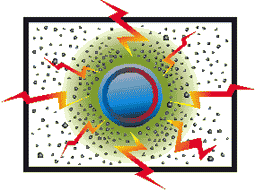 |
Carbon monoxide detectors provide constant monitoring of your indoor air to detect unsafe levels of carbon monoxide. In addition to having carbon monoxide detectors, it is strongly recommended that you have fuel-burning appliances (such as gas clothes dryers and furnaces) and venting systems maintained on a regular basis to reduce or even eliminate potential carbon monoxide-related dangers that they may pose. Choose a high quality detector for more effective detection. |
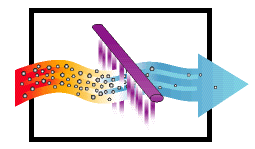 |
Air purifiers inhibit the growth of biological organisms that may be present in your home. These include products such as ultraviolet lights and microbiocide treated air filters. Odor removal can be accomplished through the use of charcoal activated air filters. |
 |
Heat recovery ventilators (HRV's) and energy recovery ventilators (ERV's) bring fresh air into your house and exhaust stale air out. HRV's conserve energy from indoor conditioned air, and transfer it to the outdoor air as it's brought in your home to provide adequate ventilation. ERV's provide the additional benefit of maintaining desired humidity levels to help keep you comfortable. |
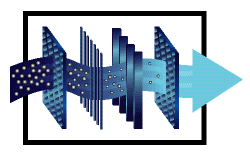 |
Electronic air cleaners (EAC's) and high-efficiency air filters, such as April Air's Media Air Cleaner, help clean the air and provide respiratory relief by removing dust, dirt and pollen. They are designed to trap even microscopic particles, so cleaner air is circulated back into your home. |
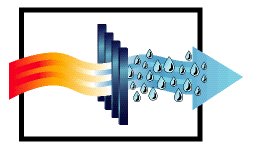 |
Humidifiers add moisture to every room in your home to soften harsh, dry air. The American Society of Heating, Refrigerating and Air-Conditioning Engineers (ASHRAE) recommends that the relative humidity in your home should be between 30-60 % to minimize the growth of bacterial and biological organisms. Using a humidifier can help you to maintain this standard, and help you stay comfortable at lower thermostat levels. |
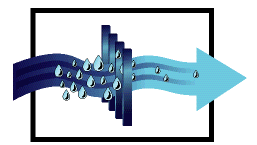 |
Humidity controls adjust the relative humidity inside your home without affecting room temperature. Proper humidity levels will make your home feel more comfortable and can provide better energy efficiency. |





